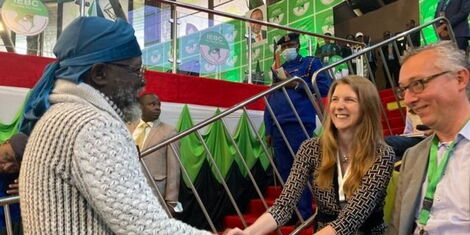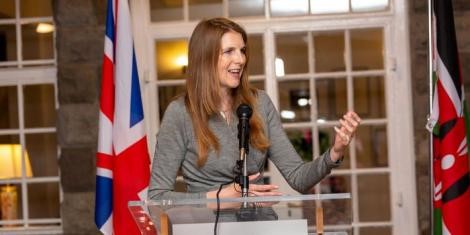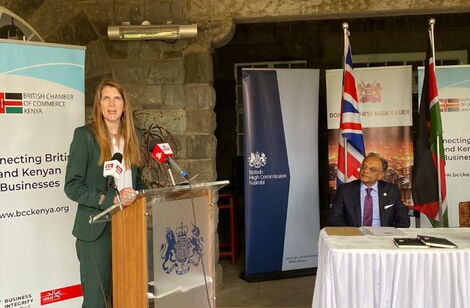- Details
- East Africa
- 939
-
UK Ambassador to Kenya Jane Marriott during a meeting with Kenyan CEOs Chiefs of Staff on July 26, 2022. AMBASSADOR JANE MARRIOT
-
The UK ambassador to Kenya Jane Marriott has issued a statement addressing viral photos of her meeting the Independent Electoral and Boundaries Commission(IEBC) Chairman Wafula Chebukati and UDA leader William Ruto.
In a statement issued on Monday, August 22, Marriott dismissed claims that she, in her capacity as UK envoy, endorsed Ruto during the August 9 General Election.
She termed the allegations as misinformation, maintaining that Britain has no preferred candidate in Kenya's ongoing electoral process.
UK High Commissioner to Kenya Jane Marriot (left) gives an address during the signing of the UK-Kenya partnership agreement on June 22, 2022.TWITTER UK HIGH COMMISSION"For the avoidance of doubt, I want to categorically reiterate that the Great Britain does not support or have a view on any candidates or parties in elections," Marriott clarified.
She maintained that London was neutral with respect to the polls and that the meeting with Chebukati was in line with her roles to affirm the UK's support to the country and its institutions.
"Who Kenyans elect is a matter for the people of Kenya. We meet people from across the political spectrum to explain the UK’s programmes and partnership with Kenya, including independent institutions.
The head of the UK mission reckoned that the election was a manifestation of the freedom of Kenyans to exercise their civic rights. She added that the monarch under the helm of Queen Elizabeth had no intention of undermining the same.
Marriott echoed an earlier joint statement issued by envoys on August 15, affirming that Britain shared the same views with her European colleagues.
The statement signed by Australia, Canada, Denmark, Germany, Switzerland, Sweden, the Netherlands, Norway lauded the political stakeholders including the electorate for their conduct during and after the poll.
"We commend the people of Kenya for the peace and calm displayed on Election Day. Kenya has set an example to the region and continent as a whole
"We call upon all actors to uphold the spirit of peace in the coming weeks. We encourage all politic al parties and leaders to follow all existing mechanisms for dispute resolution as laid out in the constitution of Kenya," the Embassies wrote.
 UK Ambassador to Kenya Jane Marriott meets Roots party candidate George Wajackoyah at the Bomas of Kenya on August 15, 2022. By Paul Kurgat, Kenyans.co.ke
UK Ambassador to Kenya Jane Marriott meets Roots party candidate George Wajackoyah at the Bomas of Kenya on August 15, 2022. By Paul Kurgat, Kenyans.co.ke






